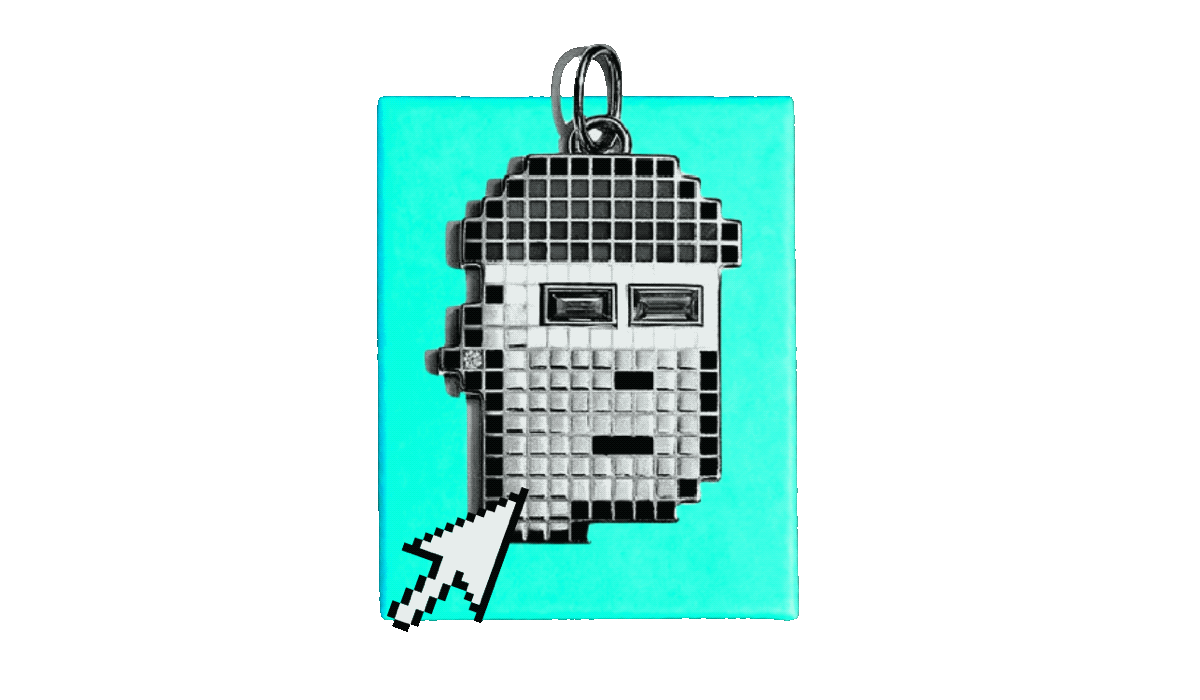At some point during the recent rise of “Web3’s” biggest protagonists – cryptocurrency and NFT – a project hailed as the most important one in the NFT landscape yet begun to make the rounds. It goes by the name “CryptoPunk,” which sounds like an underground movement that seems to beckon the subversive among us who can afford to take part. But the surface appeal of CryptoPunk borrows all of its aesthetic from the traditions of cyberpunk but none of their ethos.
During the ’90s, physically locating around heavily militarized spaces became untenable for activists, who then turned to organizing online. The early Internet then became ripe for a “rising swell of cyber-civil-disobedience.” Cyberpunk – and its intersection with ethical hacking – thus represented an ideology of resisting state power and inequality using the Internet as its battleground.
A 1999 issue of punk zine Punk Planet had this to say about hacktivism: “if this is a cyberwar, then information is the weapon and home pages everywhere are the frontline…” Most importantly, hackers never, ever, hacked for personal gain or benefit.
It cuts to the heart of what punk is: subversive, against the grain of the soulless machines of corporate capitalism, sexy, fearless, rebellious. Punk is resistance – and it was always meant to be.
Cyberpunk, then, responded to the anxieties about cyberspace, tech, and the changing role of corporations vis a vis governments. Works of dystopian fiction – like The Blade Runner, The Matrix, and others that explored the implications of occupying liminal space between virtual and real – were inheritors of cyberpunk. They were pessimists of the techno future, predicting societal collapse in the wake of accelerated technologizing. “Cyberpunk escaped from being a literary genre into cultural reality,” wrote R.U.Sirius in Mondo 2000: A Users Guide to the New Edge.
Related on The Swaddle:
How Crypto ‘Bro’ Culture Around Finance Is the New Toxic Masculinity
Now, we have CryptoPunk – a floating term in cyberspace that sounds as exciting, radical, and revolutionary as cyberpunk itself. It is, however, much less thoughtful or subversive than it sounds; it is simply a type of limited edition non-fungible token (NFT) that’s breathlessly hailed: “A status symbol, a piece of Internet history, and an unspeakably valuable asset, CryptoPunks may be the most important NFT project there is.”
The CryptoPunk project is a collection of pixelated images that have supposedly unique attributes “and include things like hats, pipes, necklaces, earrings, eyepatches, and more.”
The obviously inflated and hollow value of these images aside, the way CryptoPunk is marketed appropriates subcultures that it does not represent. “CryptoPunks are a combination of art, technology, absurdity, and social experimentation that is analogous to radical tokenization methods used by artists like Andy Warhol,” declares one news article.
It is, however, extremely difficult to argue that NFT artwork going for millions in cyberspace is the kind of punk tech future that the original cyberpunks imagined. By definition, NFTs are tokens that are meant to be owned exclusively; they are storehouses of private value that serve as economic leverage for the people at the top of the financial food chain – everything that is antithetical to the spirit of punk.
CryptoPunk speaks to how cyberpunk, like most other subcultures, is reduced today to exist as merely an aesthetic that lives on independent of its actual roots. The cyberpunk vibe is disco-alien glamor, metallic sheens and sleek chic that now graces fashion magazine covers and the catalogue of high-end fashion. In other words, the legacy of cyberpunk rooted in social justice movements is now reduced to commercializing an aesthetic – something that aligns itself with the status quo rather than disrupting it.
“The classical subculture ‘died’ when it became the object of social inspection and nostalgia, and when it became so amenable to commodification. Marketers long ago awakened to the fact that subcultures are expedient vehicles for selling music, cars, clothing, cosmetics, and everything else under the sun,” noted scholar Dylan Clark.
Related on The Swaddle:
Blockchain Ideology Is Rooted in Exclusion. A Feminist Lens Shows Why
Now, jewellery company Tiffany & Co. unveiled plans to sell CryptoPunk-inspired diamond pendants for 30 ETH (roughly $50,000 USD) apiece – exclusively to holders of CryptoPunk NFTs. The aestheticization of cyberpunk, then, is complete – with a luxury jewelry brand co-opting it for trading real pendants only to those who “own” CryptoPunk online already. As if this weren’t enough, the brand making luxury jewels with the name “punk” implicated in it has led to a significant boom in CryptoPunk trading – completing the transition of punk into a meaningless, materialistic fashion statement rather than a veritable movement.
CryptoPunk thus represents everything that cyberpunk was against.
“Classic cyberpunk characters were marginalized, alienated loners who lived on the edge of society in generally dystopic futures where daily life was impacted by rapid technological change, an ubiquitous datasphere of computerized information, and invasive modification of the human body,” wrote science fiction writer Lawrence Person, in Notes Toward a Postcyberpunk Manifesto.
Today, CryptoPunk characters are those who live in the high glass towers of society, very much shaping its society rather than being victims of it, and who use technology in ways that expand their own financial capital, power, and influence.
What made the Internet such an exciting medium was that it was fast, connected people, and provided a collective space. The common thread underlying the punkness of the Internet was its ability to shelter solidarity, holding common resources, knowledge, and causes under its digital roof. Cryptopunk is the very antithesis of the commons, “a hyper-masculine ethos guiding an already masculine logic of tech: the idea that the commons – in this case, the digital commons – exist to simply own and store wealth without any labor,” as The Swaddle noted earlier.
By appropriating the language of punk, CryptoPunk disguises its status-quo-affirming ideology as subversive and even fashionable, and changes the meaning of punk itself. In overlaying what it means to be punk with expensive digital merchandise traded in digital currency, CryptoPunk forecloses many of the possibilities of freedom in the cyberspace that punk opened up.
“… on the one hand it is a drop out culture dedicated to pursuing the dream of freedom through appropriate technology. On the other it is a ready market for new gadgets and a training ground for hip new entrepreneurs with hi-tech toys to market. Cyberpunk… was reabsorbed into the mainstream like every other subculture before it,” wrote scholar McKenzie Wark.
In other words, cyberpunk is dead. What’s left of it is only the aesthetic, allowing financial instruments – that are inherently antithetical to the punk ideology – to wear it for as long as it sells.
Rohitha Naraharisetty is an Associate Editor at The Swaddle. Previously, she was a freelance writer and independent researcher working in the intersection of gender, social movements, and international relations. She can be found on Instagram at @rohitha_97 or on Twitter at @romimacaronii.
Your email address will not be published. Required fields *.
document.getElementById(“ak_js_1”).setAttribute(“value”,(new Date()).getTime());


